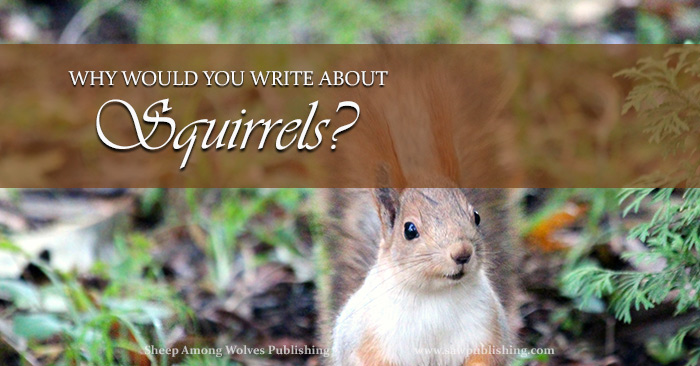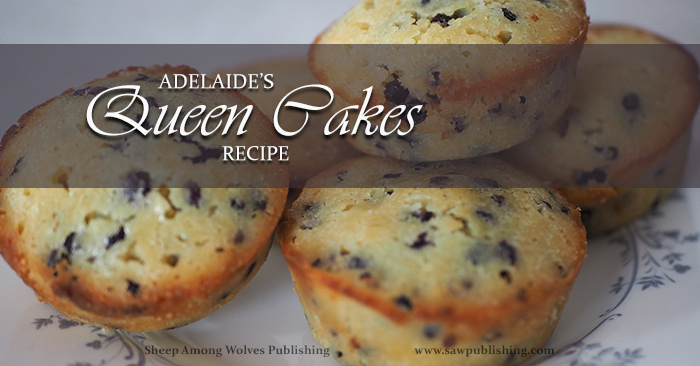Why Would You Write About Squirrels?
 Why would you write about squirrels?
Why would you write about squirrels?
I grew up holding squirrels rather cheaply. Most people do, I guess, when they live in close proximity to three large maple trees—and an endless supply of small furry creatures that like to make inroads on neighbouring attics.
Then I spent eight years living where squirrels were not.
And then I wrote a book where a squirrel stars in the opening scene.
Today’s peep behind the scenes is dedicated to Rufus—Richard’s pet squirrel—and how he became a part of As the Heavens Are Higher.
When I wrote my first draft of As the Heavens Are Higher there was no Rufus in it. There was also no first chapter. I mean, there was a first chapter—but it wasn’t the one that you read when you opened the published copy.
The original opening chapter for As the Heavens Are Higher was begun before I had even completed the outlining process. It was a valuable chapter from the author’s perspective, because it got my imagination working, and started the development of the characters. But I have to admit it did next to nothing for the plot!
In the course of editing, I came to the conclusion that the first chapter needed to be re-cast, if it was going to serve the story as a whole. And that is where I came to the discovery that I needed something small and furry in Richard’s pocket . . .
 Why a Squirrel?
Why a Squirrel?
Red squirrels are a protected species in Northumberland. They are sufficiently endangered that the Northumberland County Council welcomes reports of all sightings.
When I was looking for some time of wild animal that Richard could tame for a pet, I thought it would be nice to pick something that would have local significance to the setting.
Admittedly bats, otters, and great crested newts were all options as well—but a squirrel is a lot simpler to tuck in your pocket! Besides which, just take a look at the ears! Did you ever see anything so delightful???
Squirrels in Victorian Fiction
So if I chose a red squirrel because of its modern significance, is there any good reason to suppose it was a believable pet in the 1850s?
Surprisingly, pet squirrels have a respectable presence in Victorian fiction.
Catherine Parr Traill includes a tame flying squirrel in her 1856 children’s story Lady Mary and Her Nurse. Joanna Mathews, writing thirteen years later, depicts a farm boy who has tamed an entire family of squirrels living in a tree near his house in her Bessie Among the Mountains. Jacob Abbott, whose Rollo series enjoyed considerable popularity in the early nineteenth century, introduces children who want to own a squirrel into multiple books—although always representing the practice of caging one as more or less inhumane.
Victorian authors were sensitive to the fact that squirrels are wild animals, and might suffer unfairly under captivity. At the same time, they believed that a wild creature could be tamed by kindness and patience into a friendly pet. Their fiction is reflective of this belief.
So That’s Why I Chose to Write About Squirrels!
Rufus is a red squirrel—which is why he was named Rufus in the first place. Rufus means, quite simply, “red-haired!” As a bit of trivia, it is a Biblical name (Mark 15:21, Romans 16:13) and also the nickname of William II.
Despite being an afterthought in terms of plot development, Rufus slipped into his niche surprisingly well. Looking back, I kind of wounder how my characters got up the tree in Lady Bradstock’s pasture or into the De Fontes’ Pele Tower or out of the Columbus game, in the earlier drafts, before Rufus was there to help them!
I guess it’s just one of the places where God’s plan—even in the first outline—was bigger than mine.
If you are interested in more behind-the-scenes sneak-peaks on the creation of As the Heavens Are Higher (as well as a really good recipe!) see our previous post:

As the Heavens Are Higher—is it a true story? If my life had a FAQ page, this one would be pretty near the top, even though the answer is a complicated one.

Do you struggle with regret because daily responsibilities leave you little or no time to work for God? “Mary’s Secret” by Catherine Douglas Bell is the story you have been waiting for!

Is homemaking a call for every woman? Or is it only the responsibility of a few? What does it truly mean to have our hearts at home?


I love this, Courtenay!!! It was so fun!
Thanks, Katja!